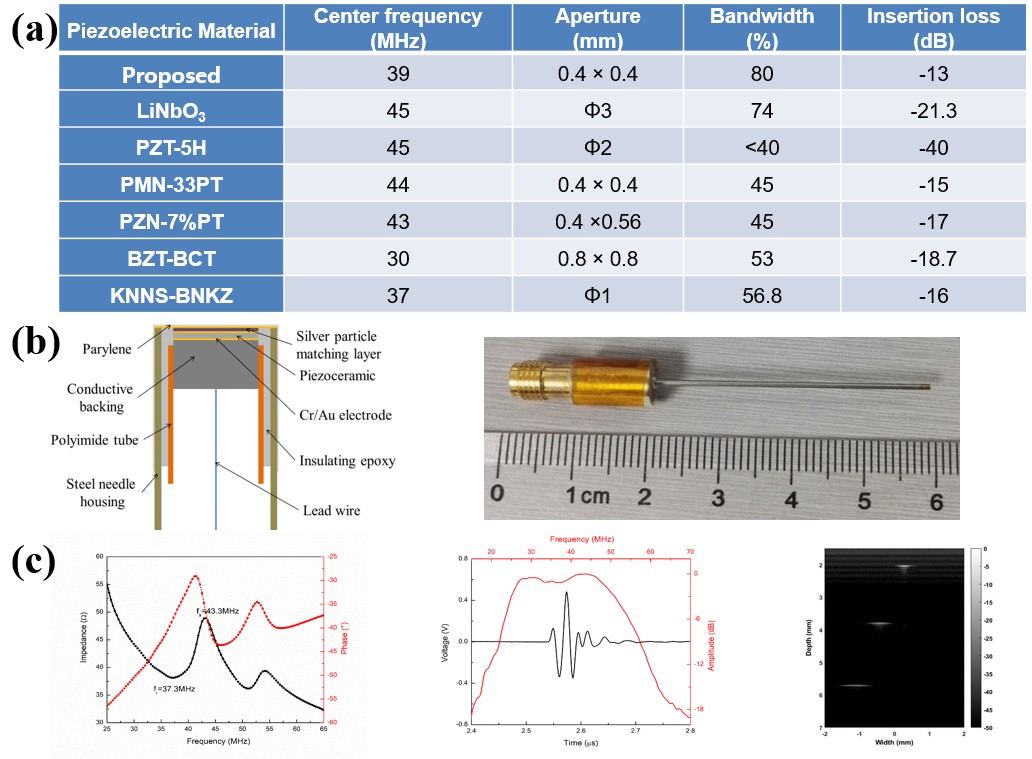
New progress has been made in the development of high resolution ultrasound imaging methods and systems by Prof. ZHENG Hairong's ultrasound group in Shenzhen Institute of Advanced Technology (SIAT) of the Chinese Academy of Sciences.
High-frequency ultrasound imaging (>20 MHz) has gained widespread attention due to its high spatial resolution which is useful for basic cardiovascular and cancer research involving small animals. SIAT ultrasound group has carried out several research projects on novel high frequency ultrasound transducers and electronics.
High frequency transducer is a key device in ultrasound imaging system. Piezoelectric materials are usually employed for the transducer, but its clamped dielectric permittivity is relatively low in traditional materials.
Therefore the impedance of a small size transducer is not good, which ultimately induces bad performance of the transducer. A modified Pb (Mg1/3Nb2/3) O3-PbTiO3 (PMN-PT) polycrystalline ceramic with ultrahigh relative clamped dielectric permittivity (εS/ε0 = 3500) and high piezoelectric properties (d33 = 1100 pC/N, kt = 0.55) was proposed to fabricate high frequency miniature ultrasound transducers in SIAT ultrasound group.
A 39 MHz high frequency ultrasound needle transducer with a miniature aperture of 0.4 mm × 0.4 mm was designed and successfully characterized. The fabricated needle transducer had an electromechanical coupling factor kt of 0.55, large bandwidth of 80% at -6 dB and low insertion loss of -13 dB.
A wire phantom and porcine eyeball imaging study showed good imaging capability of this needle transducer. The transducer performance was found to be superior than that of other needle transducers with miniature apertures, making this modified PMN-PT ceramic based needle transducer quite promising for minimally invasive procedures in medical applications.
The work was published in IEEE Transactions on Ultrasonics, Ferroelectrics, and Frequency Control.

Figure: (a) Comparison with high frequency ultrasound transducer with different materials; (b) The structure and the fabricated transducer; (c) Imaging performance of the proposed transducer. (Image by SIAT)

86-10-68597521 (day)
86-10-68597289 (night)

52 Sanlihe Rd., Xicheng District,
Beijing, China (100864)

